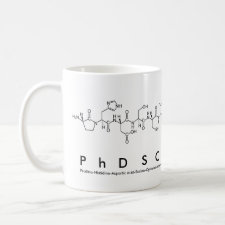
Authors: Lotierzo M, Henry OYF, Piletsky S, Tothill I, Cullen D, Kania M, Hock B, Turner APF
Article Title: Surface plasmon resonance sensor for domoic acid based on grafted imprinted polymer.
Publication date: 2004
Journal: Biosensors and Bioelectronics
Volume: 20
Issue: (2)
Page numbers: 145-152.
DOI: 10.1016/j.bios.2004.01.032
Alternative URL: http://hdl.handle.net/1826/3439
Abstract: A molecularly imprinted polymer (MIP) film for domoic acid (DA) was synthesised by direct photo-grafting onto a gold chip suitable for a surface plasmon resonance (SPR) based bioanalytical instrument system, the BIAcore 3000(TM). The gold surface was first functionalised with a self-assembled monolayer of 2-mercaptoethylamine and subsequent carbodiimide chemistry was performed for covalent attachment of the photoinitiator, 4,4'-azobis(cyanovaleric acid). This ensured that the formation of the MIP thin film, comprising 2-(diethylamino) ethyl methacrylate as functional monomer and ethylene glycol dimethacrylate as cross-linker, occurred only at the surface level. Optimisation and control over the grafting procedure were achieved using contact angle measurements and atomic force microscope (AFM) imaging. The surface grafting resulted in the formation of thin and homogeneous MIP film with thickness of 40 nm. A competitive binding assay was performed with free DA and its conjugate with horseradish peroxidase, which was used as a refractive label. The sensor was evaluated for its sensitivity, cross-reactivity, and robustness by using a BIAcore 3000(TM). Likewise, monoclonal antibodies acting as natural receptors for the toxin were studied with the same BIAcore system. Results of a comparison between the artificial and natural receptors are reported. In contrast to monoclonal antibodies, the regeneration of MIP chip did not affect its recognition properties and continuous measurement was possible over a period of at least 2 months



Join the Society for Molecular Imprinting

New items RSS feed
Sign-up for e-mail updates:
Choose between receiving an occasional newsletter or more frequent e-mail alerts.
Click here to go to the sign-up page.
Is your name elemental or peptidic? Enter your name and find out by clicking either of the buttons below!
Other products you may like:
 MIPdatabase
MIPdatabase









